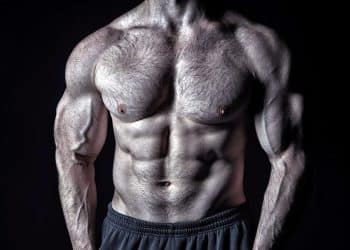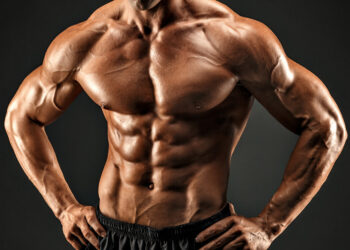If you’re a bodybuilder, full and symmetrical pectoral muscles are an absolute must; which becomes even more important if you compete. After all, who doesn’t want a huge, chiseled chest on stage?
But chest training is not just important in bodybuilding, it’s also essential for powerlifters, strongman athletes, and any sport where upper body strength matters. Most guys focus on the bench press, and usually, your training is framed by the question “how much ya bench”?
However, there’s more to complete chest development than the bench press. Typically, the dumbbell flye is an exercise that is often performed near the end of your chest session, usually when you’re too tired to do it justice. Yet the flye is an important addition to any chest routine because it offers something that the press doesn’t.
Of course, a compound movement that allows you to use progressively heavier weight should be the core of your routine. But flyes are one of the key movements you should do after your main strength training. As an isolation exercise, it targets the chest muscles specifically and stimulates additional muscle fibers. Flyes also help develop chest separation and are a viable alternative if an injury limits your ability to bench press.
Chest Anatomy
Knowing the anatomy and function of the muscle you’re training is critical to getting the most out of your exercises. Not feeling the target muscle working during an exercise is often a problem that’s related to poor form. So, the first step to learning correct form is understanding how the muscle works. Once you know the movement patterns of the chest muscles, you can better visualize the correct performance of the exercise. If you can see it in your mind, you can execute it correctly.
The chest consists primarily of two muscles:
Level Up Your Fitness: Join our 💪 strong community in Fitness Volt Newsletter. Get daily inspiration, expert-backed workouts, nutrition tips, the latest in strength sports, and the support you need to reach your goals. Subscribe for free!
- The pectoralis major
- The pectoralis minor
The pecs, as the chest is often called, are attached to the humerus of the arm, right near the shoulder joint. They then run across the front of the body and originate on the breastbone.
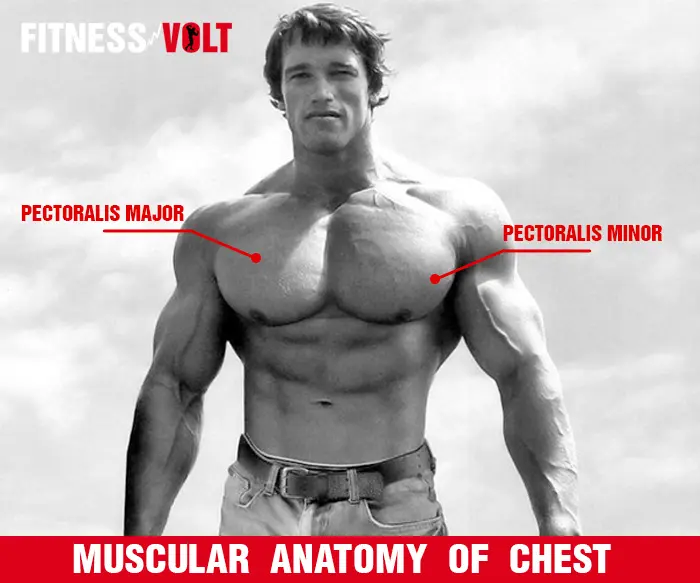
The pectoralis major is the primary chest muscle. It’s a thick, fan-shaped muscle that’s attached to the front of the body on the rib cage. It has three primary functions: to bring the humerus across the body as in a flye movement, to move the shoulders forward as in the bench press movement, and to rotate the shoulder toward the midline/front of the body. [1]
The pectoralis minor is a thinner, triangular-shaped muscle that sits below the pectoralis major. It originates along the third to fifth ribs and then passes upward and across to insert into the medial border and superior surface of the coracoid process. It primarily helps stabilize the scapula by pulling it downward.
Muscles Worked By Dumbbell Flyes
Now that we have a basic idea of the anatomy of the chest, let’s look specifically at the muscles that are worked by the dumbbell fly. [2][3]
Pectoral Muscles
Dumbbell flyes directly target the pecs. It’s a single joint exercise with minimal involvement of the shoulders and triceps, which are the supportive muscles involved in all chest exercises.
Anterior Shoulder
The anterior, or front shoulder muscles have a supporting role in this exercise.
Scapular Stabilizers
The scapular stabilizers support the chest while performing dumbbell flyes. They help stabilize the shoulders during the movement. Without shoulder stabilization, the anterior shoulder muscles could overtake the chest muscles, thereby reducing the effectiveness of the dumbbell flye.
Biceps
While the triceps are not overly involved in this exercise, there is some secondary biceps involvement during the dumbbell flye.
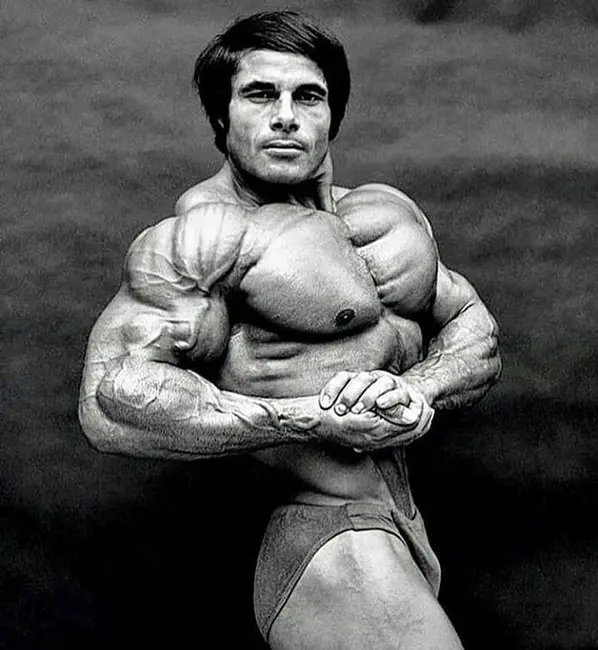
Benefits Of The Dumbbell Flye
The primary benefits of the dumbbell flye include:
Chest Isolation
Sometimes an injury demands adjustments to your training program. The dumbbell flye can be a good exercise for the bodybuilder or athlete that’s attempting to target the chest muscles while dealing with an injury or if you’re trying to limit excessive wear and tear on the triceps, elbows, wrists, and shoulders.
Increase Chest Size
Isolation exercises are good additions to a routine that otherwise focuses on compound movements. They provide a good way to enhance specific muscle activation by placing a demand on the primary muscle without help from the other muscles as in compound, multi-joint exercises such as the bench press. The dumbbell flye ensures complete chest development as well as being a good exercise to use in a weak point training program.
Extended Set Training
Flyes also lend themselves well to the extended-set techniques used by some bodybuilders and athletes that like to push their sets past the point of momentary muscle failure. Techniques such as drop sets or supersets are often used for this purpose and work well with flyes.
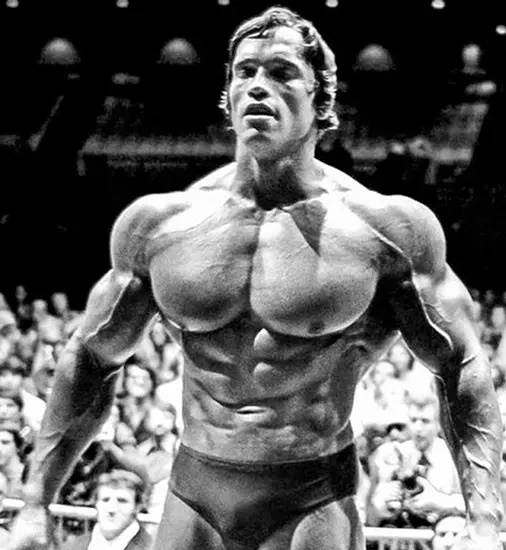
How To Do A Dumbbell Flye
Below is a guide to properly doing the dumbbell flye on a flat bench.
1. Starting Position
Lie down on a flat bench with your feet flat on the floor. Hold the dumbbells directly above your chest, with your elbows slightly bent and palms facing towards each other.
2. Eccentric Phase
From the starting position, lower the weights in an arc away from and straight out to the sides of the body, going as far and low as comfortably possible.
Think of hugging a tree, or giving someone a bear hug, to get a mental picture of how this should look.
Level Up Your Fitness: Join our 💪 strong community in Fitness Volt Newsletter. Get daily inspiration, expert-backed workouts, nutrition tips, the latest in strength sports, and the support you need to reach your goals. Subscribe for free!
3. Concentric Phase
Once you have reached a fully stretched position, pause for a moment and then begin to bring the dumbbells back to the start position in a slow and controlled manner. Keep your elbows slightly bent and reverse the movement by bringing the dumbbells back to the start position.

Performance Notes
Perform this exercise in a slow and controlled manner. Control the weight, don’t let the weight take over and control you. Momentum should never be part of this or any movement.
Use your chest muscles to perform the movement. When you begin the downward arc, start by contracting your chest muscles and thinking of the arms as hooks. When you reach the bottom, contract your chest muscles hard, then start the pull back up, letting your chest pull your shoulders and arms.
You only need to go down far enough to get a decent stretch but you don’t want to overdo it which could result in a pec tear or shoulder injury.
One of the keys to feeling the muscle work is to always start the exercise using the target muscles. This concept is especially important in chest and back work, where it’s common to have problems feeling the muscles work. If you want to get the most out of the exercise, it’s all about form and feel. If you just want to lift as much as possible, good form helps prevent injury but feel doesn’t matter.
One of the keys to this exercise is to keep the elbows slightly bent yet fixed, which helps isolate the chest muscles. Visualize a “bear hug” to keep the dumbbells apart and so your arc is a hugging motion, rather than simply pressing up.
See it here:
Who Should Do The Dumbbell Flye?
Bodybuilders
The dumbbell flye is an excellent single-joint chest exercise that should be done after your main strength work to help ensure complete development and stimulate greater hypertrophy. This exercise also helps develop that separated look in the chest that most bodybuilders crave, especially competitive bodybuilders.
Many lifters follow the failure training philosophy that was especially popular with guys like Mike Mentzer and 6x Mr. Olympia Dorian Yates. Arthur Jones and his Nautilus programs also had a lot to do with the popularity of this type of training. One of the common concepts in this philosophy is to take your sets past failure using extended set techniques, such as drop sets or supersets.
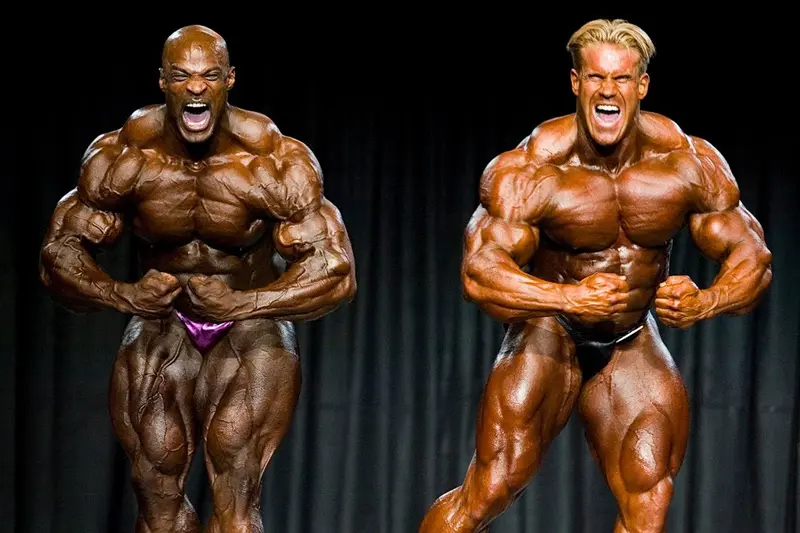
The dumbbell flye is a great exercise for these techniques. In a drop set, you can set up 3-4 progressively lighter pairs of dumbbells and after taking each set to failure, go to the next pair and so on until you have completely annihilated your chest muscles. In a superset, you can use them as part of a pre-exhaust approach where you do the flyes first and follow them with a pressing movement. Of course, you can do them post exhaust style where you follow a heavy pressing movement with flyes.
Powerlifters and Strength Athletes
Powerlifters and strength athletes want the biggest bench press possible. With that in mind, they can benefit from incorporating the dumbbell flye into their routine because it helps improve size as well as strength in the chest and supporting muscles. You’re only as strong as your weakest link and flyes can help even out strength deficiencies throughout the chest. After all, a bigger chest is a stronger chest. This can help give you a bigger bench and can also help injury prevention by helping to eliminate any weak points in the chest.
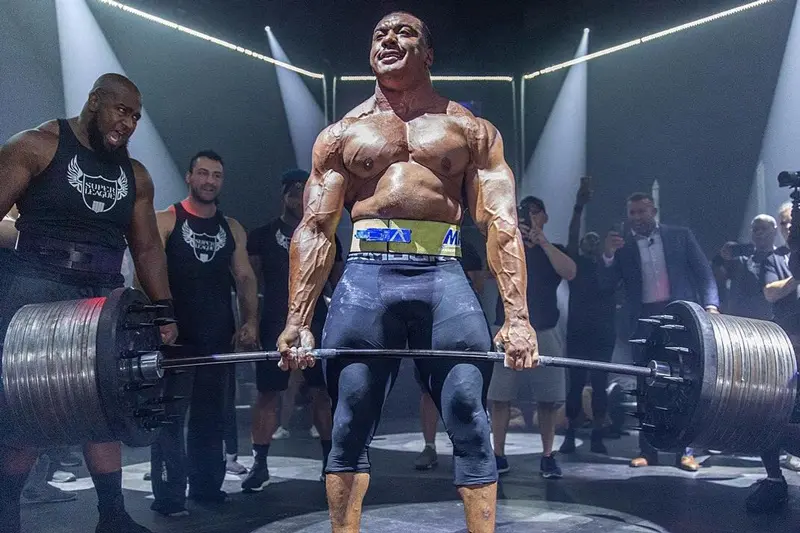
General Fitness
The dumbbell flye can be done by anyone that wants to train the chest. Most fitness enthusiasts and general exercisers tend to perform easier, single-joint isolation exercises as opposed to the perceived difficulty of compound movements such as the bench press. They may see the bench press as an exercise done by bodybuilders and powerlifters, and they “don’t want to get big muscles” as they “just want to tone”. The dumbbell flye fits this mindset.
Incorporating Flyes Into Your Routine
General Fitness
Fitness enthusiasts that want to use the dumbbell flye in their program should perform 2-3 sets of 12-15 reps with 60-90 seconds rest between each set. Use light to moderate weights.
Bodybuilding
Bodybuilders that want to use the dumbbell flye should perform 4-6 sets of 6-12 reps with 60-90 seconds rest between sets. Use progressively heavier weights. For some bodybuilders that train past failure, flyes are a great choice for drop sets, supersets, or tri-sets. In this case, adjust your weights to fit the technique.
General Strength
For general strength, athletes that want to use the dumbbell flye should perform 4-6 sets of 4-6 reps with 2-3 minutes rest between sets. Use heavy weights but be sure your form is correct to help avoid injuries.
Top 3 Dumbbell Flye Variations
Below are three primary variations that can be used by anyone that wants balanced chest development.
1. Incline Dumbbell Flye
This variation of the dumbbell flye is done lying on an incline bench. This targets the upper pecs which is a common weak point among bodybuilders and athletes. Adding incline flyes to your routine ensures balanced development and strength throughout the chest region. You’ll want to keep your incline at about 30 degrees, if you go much higher it’ll turn into a front delt exercise.
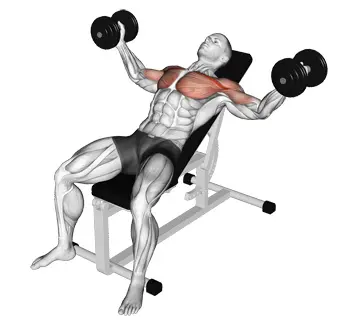
2. Decline Dumbbell Flye
This variation is performed lying on a bench set at a decline. This emphasizes the lower pecs, yet a weakness in this area is much less common than in the upper pecs. Although, it doesn’t hurt to throw in a few sets each chest session.
3. Dumbbell Flye with Chains/Bands
Many powerlifters and strength athletes add bands or chains to their exercises to help provide even resistance throughout the complete range of motion. You can add bands or chains to your flyes for that reason.
Dumbbell Flyes FAQs
What is a dumbbell flye?
It’s an isolation exercise that involves lying on a bench and executing the movement by arcing your arms out to your sides, then using your chest to bringing them back up and together as if you were pretending to hug someone.
Which muscles does the dumbbell flye work?
The dumbbell flye is a chest isolation exercise, therefore, this is the main target muscle. However, the triceps and biceps receive a lesser degree of stimulation as assisting muscles.
What are the benefits of the dumbbell flye?
There are several benefits of including the dumbbell flye in your chest training routine.
Benefits include:
- Muscle building
- Improved strength in a naturally weak position
- Viable alternative for those with injuries
- Easy on the joints
- Great for doing drop sets
Are dumbbell flyes safe?
If not executed properly the dumbbell fly compromises the safety of the shoulder joint due to the open-chain nature of the movement which allows for the limbs to move far away from the body.
Using a weight you can handle with good form, keeping the elbows slightly bent, and going too far down are the best tips for preventing an injury.
Which exercises can I replace the dumbbell fly with?
There are a few effective alternatives to the dumbbell flye which include…
- Cable flye
- Chest fly machine
- Pec dec
Conclusion
A great chest is built from a combination of several different exercises, not just the bench press. Dumbbell flyes are a great addition to any chest program, whether size and strength is the main goal or whether you’re simply training for overall fitness.
A flye can help you fully develop your chest because it specifically targets the chest, improving size and strength. So, add in a few sets of flyes and give them a try!
References
- Baig, Mirza A.; Bordoni, Bruno (2020), “Anatomy, Shoulder and Upper Limb, Pectoral Muscles”, StatPearls, StatPearls Publishing, PMID 31424825
- Welsch, E. A., Bird, M., & Mayhew, J. L. (2005, May). Electromyographic activity of the pectoralis major and anterior deltoid muscles during three upper-body lifts.
- Reiser, Fernando & Lira, Jumes & Bonfim, Beatriz & Filho, Solival & Durante, Bruno & Cardoso, João & Miotto, Hamilton & Soares, Marcos & Bonuzzi, Giordano & Tavares, Lucas. (2017). Electromyography of Dumbbell Fly Exercise Using Different Planes and Labile Surfaces. Journal of Exercise Physiology Online. 20. 31.


